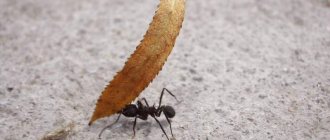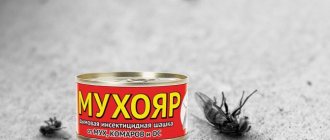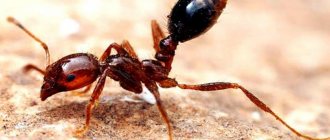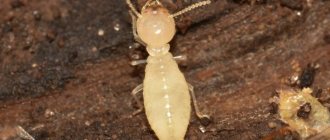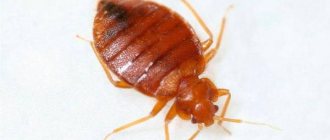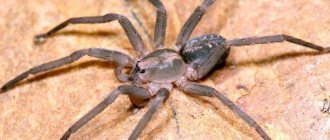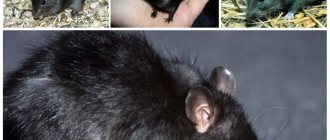Mosquito: description, structure, characteristics. What does a mosquito look like?
The mosquito belongs to the order Diptera and the family of blood-sucking mosquitoes.
Mosquitoes have lived on Earth for as much as 145 million years. The mosquito has a thin body from 4 to 14 mm in length. The wings of a mosquito are transparent, they reach up to 3 cm in diameter and are covered with small scales. The mosquito's abdomen consists of ten segments. The mosquito's long legs end in two claws.
The color of a mosquito, in addition to the usual black or brown, can also be very unusual; green, yellow, orange and red mosquitoes are found in nature.
Interesting fact: among the large family of mosquitoes, there are also wingless species.
Mosquitoes also have a kind of antenna, consisting of 15 parts, on which the olfactory organs and auditory receptors are located, working on the principle of a temperature sensor. It is with the help of such an antenna that the mosquito finds its victim.
Appearance and dimensions
The main difference between the Karamore is the non-standard length of the legs. Thanks to her, the mosquito has another name - long-legged. The insect has an oblong head with 12-19 segments and large mesh eyes. His body is slender, his abdomen is elongated. Males are distinguished by a thickened tip of the body, females by an elongated one.
The forewings are translucent and narrow, and in certain species they are also variegated. The hind ones are presented in the form of short processes that play the role of a stabilizer during flight. The size of the largest mosquito can vary greatly: from 2 mm to 6 cm. Individual representatives reach 10 cm in length.
You need to understand that the mosquito owes its dimensions to the length of its legs, since its body is quite small. If the insect is in danger, then when it takes off, it leaves one limb in the attacker’s mouth. Scientists call this event autotomy, that is, self-mutilation.
What is the weight of an ordinary mosquito - how many milligrams does it weigh?
Who knows exactly about the weight of a mosquito, how much it can weigh and whether a mosquito even has any weight?
| Mosquitoes are bisexual, dipterous insects. Females feed on animal and human blood, while males feed exclusively on plant sap, according to scientists. The density of blood is higher than that of plant sap; accordingly, the insect’s nutritional environment affects its weight. It follows that the weight of the female is greater than the weight of the male and it reaches from 1 to 2.5 milligrams - when it “eats”, and the weight of the male is up to 0.7 mg. In addition, the weight of the insect varies from 3 millimeters to 100 millimeters (these are tropical species of mosquitoes). |
Head structure
These individuals have perfect infrared vision. There are compound eyes on the head that provide full all-round visibility. This allows them to avoid danger and for the same reason, it is not so easy for us to kill this insect.
Also on the head there are antennae, which include 15 segments. The very first segment is located on the head, and the second has Johnston's organ, which is an organ of hearing. The first distinguishing feature between males and females is the antennae.
After the first 2 come the whip segments; in females they are cylindrical in shape and covered with short hairs, which are quite few. But in males they have a conical shape, which is covered with thick and long hairs.
Even without using a microscope, this is easy to notice because the antennae appear fluffy. According to scientists, these bloodsucking antennae partially replace the olfactory organ, since it is absent.
They have a piercing-sucking type of mouthparts. It includes 6 sharp needles that are covered with a flexible, soft cover. The cover performs the protective function of the proboscis and protects it from damage. The first four needles are placed in the form of a stiletto; the first outer ones have an additional file, which provides easy puncture of the skin. The role of their teeth is performed by hard chitinous bristles.
They have hollow internal tubes, it is designed for saturation, through which the mosquito sucks blood. The mosquito uses the second tube to inject poison, which serves as an anesthetic.
Only females have a fairly complex structure of the oral apparatus. In males it is underdeveloped and their diet consists exclusively of flower nectar.
Despite the rather small size of their heads, mosquitoes have a large brain. It has 2 longitudinal nerve trunks that run parallel to each other in the chest area and connect above the pharynx in the head.
Also, the main part of the brain is supplemented by ganglia; they are nerve nodes that are located in the abdomen and are also located in the chest segments. The ganglia perform a very important function, since they coordinate the work of absolutely all organs.
Mosquito legs - what's special?
Many people are interested in the question of how many legs a mosquito has. He has three pairs of legs, like most insects on our planet. Each tarsus consists of five segments, and the last one necessarily has suckers, which are developed differently in each specific species.
However, it is not the number of legs that is of interest, but those very suction cups that allow the mosquito to calmly hold its body on vertical surfaces.
Oral apparatus
The mouthparts of a mosquito are no less interesting. It consists of two pairs of jaws and two lips - upper and lower. The lips of this insect are slightly elongated and, having such a structure, resemble a gutter. If you look inside it, you can find long needles that are jaws.
So, these insects have jaws, lips and even a tongue that produces saliva. And here a reasonable question arises: do mosquitoes have teeth? And what’s surprising is that there is. They are very small, and their number reaches 50 pieces. It is thanks to them that the bloodsucker can pierce the skin.
Legs
The legs of mosquitoes consist of a coxa, trochanter, femur, tibia and tarsi. The tarsus is divided into five segments, the last of which has two claws. Under each of the claws there are suckers, of varying degrees of development in different species.
The main task of the claws is to hold the mosquito on overturned or vertical surfaces.
The parts of the legs located near the point of their attachment to the body are called bases, and the parts most distant from the points of attachment are called apexes. The inner side of the apex of the hind tibia is represented by a number of flat spines, which form a scraper.
Abdomen
The abdomen of mosquitoes, as previously noted, consists of ten segments, the last two of which are parts of the external genitalia. Each of the anterior eight segments of the abdomen consists of dorsal and ventral plates, which are connected to each other by the pleura - a non-segmented elastic membrane.
An increase in volume and stretching of the abdomen due to blood sucking, obesity and maturation of eggs lead to stretching and straightening of this membrane. In the pleura, each segment from the second to the sixth contains six pairs of spiracles, significantly different from the pectoral ones both in size and structure.
The plates of the last segments form segments surrounding the genital and anal openings. Females also have short appendages at the end of their abdomen. The reproductive apparatus of males is much more complex due to external appendages.
Breast
If we talk about the general appearance, then this part looks quite massive, but after studying it in more detail, you can understand that this is not entirely true. It includes 3 segments that are unevenly developed.
The strongest and most developed middle part, it contains all the flying muscles, and the wings are also attached. In addition to being responsible for flight, the middle part provides respiratory functions.
The front part includes the insect's fairly long neck. The rear part, the metanotum, has another spiracle and is also responsible for the insect’s respiration, but unlike the middle segment, it is rather poorly developed.
Each segment has a pair of legs. The paws, in turn, also consist of segments, of which there are 5 on each limb. On the last segment there are suction cups and claws, which allow the mosquito to stay on absolutely any surface and ideally stay on the ceiling.
It’s interesting, but now mosquitoes have a slightly different body structure; previously they had 4 wings, but now there are only 2 left. However, now they still have rudiments of the halteres from the second pair of wings, which produce this incredibly annoying squeak. By the way, only females squeak, as well as bite.
The wings have an oval elongated shape and a transparent color. They consist of veins and connecting membranes; the plates are covered with very small scales. Most individuals have transparent scales, but there are also those with different color shades. If colored scales accumulate in one place, a colored spot is formed.
In species of mosquitoes that have black and green colored bodies, colored scales accumulate in such a way that a pattern is formed. It’s hard to believe that these small insects wave with a vibration frequency of up to 1000 times per second. Some scientists argue that the wings also contain nerve endings, but in this case they act as sensory organs.
What are wings - the ability to fly or... sing?
Another amazing feature of these insects is the ability to squeak in the absence of a voice. So, why does a mosquito squeak? In fact, the squeak is not the result of the vocal cords, but the sound it makes with its wings.
On a note! Other insects are also capable of producing characteristic sounds using only their wings. And most of them make a buzzing sound - flies, bees, bumblebees, wasps, etc.!
Why doesn’t a mosquito buzz, but rather squeak? It's all about size. His wings, like himself, are very small and also quite thin and narrow. Each wing beat merges with the sound of the next beat, generating a high-frequency sound that our ear perceives as a squeak. How many flaps per second does a mosquito make? Their frequency is incredibly high and amounts to about 600 times per second!
Some interesting facts about mosquito squeaks:
- this sound helps females attract males during mating;
- mosquitoes hear not a squeak, but vibrations of sound that they pick up with their antennae;
- in females the squeak is somewhat thinner than in males;
- The squeak of young females differs from the sound of adults, and it is precisely based on these differences that the male chooses a mate for himself - a more mature female.
Digestive tract
No matter how strange it may sound, the digestive tract of mosquitoes begins with the head. The oral apparatus connects to the foregut, which in turn is divided into the pharynx, which has extensions before and after the brain.
The foregut has three esophageal appendages and two salivary glands. But they do not perform any digestive functions; they are storage tanks for food and water reserves, so the insect can do without a food source for a long time.
When there is no source of food for a long time, the reserves enter the stomach, where the process of processing and assimilation of food occurs. There is also a small and rectal hindgut.
Circulatory system
The entire circulatory system is supported by the work of the heart and diaphragm. In other words, blood is pumped, but there is no separate system. If you were wondering whether a mosquito has a heart, then the answer is clear - no.
There are no hearts in our usual understanding; they are presented in the form of a muscular tube, like a trachea, which acts as a heart and ensures blood circulation in the body. This tube is located between 1-7 abdominal segments. Interestingly, insects themselves have colorless blood.
Difference between female and male mosquito
Male and female mosquito, what is the difference between them in appearance. First of all, in the structure of the oral organ - the male’s jaws are underdeveloped, because he does not need to gnaw through the skin to drink blood.
Temperature
The body temperature of mosquitoes varies and depends on the ambient temperature. They are also able to maintain a certain body temperature, even if the external temperature is significantly different.
Mosquito vision and smell
In the environment, mosquitoes navigate using infrared radiation (body heat), as well as the accumulation of carbon dioxide around a potential victim (the smell of sweat). They have two compound eyes, like flies. Female mosquitoes use antennas sensitive to thermal infrared radiation to search for prey. At a sufficiently close distance, the olfactory receptors come into play. This can hardly be called vision; rather, it can be attributed to a well-organized system of targeting the victim.
How can you protect yourself?
Depending on how far those pesky insects fly in search of food and how much fresh blood they have, you can choose the best mosquito repellent.
DEET
The chemical repellent developed by the Department of Agriculture is great for all types of insects, not just mosquitoes. A quarter of a century of evidence has concluded that it is the best absolute repellent when it comes to how long it will protect against insect bites and the variety of insects it protects against...
Things you should know about DEET:
- It is safe to use even for children over two months old if the concentration of the product is less than 10%.
- There are many scents to choose from , and you can get something that smells like fruit, citrus, or neutral. You might even get a toiletry product.
- they contain alcohol .
- You apply them directly to the skin and let them dry.
Bearing in mind that DEET can be purchased in concentrations ranging from 5% to 100%, the activity you do will tell you how much concentration you need:
- up to 5% is good for an outdoor picnic further from the nesting sites.
- 20% It's better to fish at dawn because it will last longer.
- 100% Indicated to be 10 hours safe from insect bites if you camp on mosquito land.
The main reason DEET products don't work is because you didn't apply them to your skin correctly.
So keep them away from your eyes, nose and mouth, but make sure your skin is well covered.
picaridin
Picaridin is a good repellent that received a vote of confidence from the CDC over a decade ago. Therefore, it is considered a safe and good weapon against mosquitoes.
It doesn't smell or feel sticky on your skin and you can even use it on children. If your camp is 100-150 yards from a mosquito breeding site, a concentration of 15-25% picaridin is fine.
Eucalyptus Lemon Oil
This is a natural option and is more suitable if you are not traveling in the middle of Mosquito County.
However, it smells nice, doesn't make your skin feel weird, and is also good for mites.
mosquito repellents
This is based on an insecticide that is synthetically produced in labs, but it is definitely not as good as DEET. This works best when there is no wind and when you are away from mosquito nests.
Therma Cell
This device is also based on a laboratory-made insecticide that serves as a barrier to protect your body from mosquito bites, provided that the wind disperses it less. It is also a top choice for hunters, so you may want to consider this for your next hunt.
permethrin
This substance is so powerful that even the Department of Defense uses it in their uniforms. And since the CDC approves it and is available for purchase online, you can easily get it and apply it to your clothing.
The advantage is that you don't have to apply it directly to your skin, it's also very good for mosquito-borne diseases and works against most other insects too...
What would we choose:
- DETA : fishing trips; camping in Mosquito County; living in an area infested with mosquitoes.
- picaridin : camping in an area with moderate mosquito activity.
- Lemon eucalyptus oil : night kebabs; a trip to the forest where mosquitoes are distracted by evergreen vegetation.
- mosquito repellents : hiking in calm weather.
- Therma Cell : hunting trips; cruise trips.
- permethrin : areas with many insects, including mosquitoes; when there is a high risk of mosquito-borne diseases.
Fogging systems
These devices can be installed in your backyard and are basically aerosol sprays that start when they are scheduled. These are pesticides that affect various types of insects, including mosquitoes, which does not make them environmentally friendly.
But if you want to keep your home at least a little green, you should find out how many mosquitoes there actually are in your area. This will give you an idea of when to schedule your sprays and will also lead to effective insect population control...
Best Use : When you're building your home in Mosquito County and are more worried about not getting bitten all the time than about being environmentally friendly.
Bugs
As the name suggests, these devices work by electrocuting insects. They're proven to be effective and kill a ton of bugs every day, which is why millions of people buy them every year.
But when it comes to their ability to kill mosquitoes, the numbers aren't so good. Some recent studies show that only 4-6% of insects caught every day are mosquitoes, which means they are not of much importance at all. Additionally, that overall percentage, just under 0.2%, are women who actually bite everything.
An even worse discovery is that most of the insects killed by these devices are actually good because they form the diet of animals that eat mosquitoes. And if you kill those good bugs, in turn there will be fewer birds and animals that eat mosquitoes, which means more mosquitoes.
Best Use : When the mosquitoes you want to kill are moths and insects rather than actual mosquitoes.
Ultrasonic devices
After many studies conducted over ten years to prove that these devices do not work, many of these devices are still being purchased. This is because they are the only eco-friendly option that you can easily buy at the store if you are not interested in killing mosquitoes by raising bats or purple martins on your property.
The science behind them is that they emit ultrasound designed to prevent female mosquitoes from flying. Essentially, your goal is to avoid building breeding sites and nearby nests.
So instead of camping or building a house depending on where mosquitoes live, they will build their nests depending on where they live. It is a pity that the frequency emitted by ultrasonic devices does not squat.
carmalaysia.my
Best Use : In an area with very few mosquitoes..
Mosquito traps
They also act by reducing how many females lay eggs on their property, using a substance that attracts them into a trap that kills them. This mainly applies to fans, nets and sticky surfaces or electrical networks, and although they are quite expensive to maintain, they do work.
There are a few parts you need to replace and clean, and they are said to attract certain species more than others, but you will be impressed by the number of mosquitoes you catch.
Best Use : In an area with moderate to high mosquito levels if you are willing to do the work.
Where do mosquitoes live?
Almost everywhere, with the exception of the always cold Antarctica, but these insects are most common in areas with a hot and humid climate, where they remain active throughout the year. In temperate latitudes, during the winter cold, they hibernate, awakening with the arrival of spring. It is interesting that even in the Arctic, during those few weeks when it gets warm, mosquitoes breed with terrible force and are very annoying to the herds of deer there.
Lifespan
The lifespan of a mosquito can be from 1 month to a year. This indicator is influenced by various factors and living conditions. Insects spend the winter period in a state of torpor. Mosquitoes love to live near bodies of water with standing water. Here they feel comfortable.
To understand exactly how long an ordinary mosquito can live, it is worth considering the conditions that can affect the lifespan of creatures:
- availability of a food source. Males eat plant foods and also feed on nectar from plants. Only females drink blood. They are the ones who can attack people, animals, fish, and amphibians.
- Ambient temperature indicators. The comfortable range for creatures is considered to be from +100C. The female can live calmly at this temperature for about three months. And if it rises to +200C, then individuals can live for two months. The lifespan of mosquitoes lasts no more than 40 days if the mark on the thermometer exceeds +250C. Under the same conditions, males live half as long.
- Availability of a comfortable living environment. This factor refers to the presence of an optimal humidity indicator. For this reason, creatures prefer to live in cold utility rooms, basements, cellars;
- The presence of nearby enemies - birds, animals, humans.
How many days does a mosquito live after being bitten?
Many people believe that after a mosquito bites, they die immediately, but this is not so. Adults can eat up to 8 times in a few hours, and the insects will feel great. For this reason, when 3-4 mosquitoes fly in, it seems as if a whole swarm of buzzing bloodsuckers has arrived.
There is no connection between a mosquito's bite and lifespan.
The only thing that can happen when bitten is death from a person. At the moment when the insect bites, poison is injected, which causes severe pain, and many swat the parasite at the scene of the crime, thereby shortening the mosquito's lifespan.
When are bloodsuckers most active?
Most mosquitoes become active in the evening. In summer, closer to sunset, entire clusters of insects appear in shady areas near swamps and ponds. The person there cannot avoid severe bites.
The biting mosquito has special habits. He prefers to attack his victims in the morning and early in the day. The squeaking mosquito sits in a shelter during the day and produces blood in the late evening or at night.
All types of mosquitoes are afraid of the scorching rays of the sun and in the midday heat they hide in the grass, under the leaves of trees and in other shady, damp places. But if bloodsuckers have entered your home or office, they will bite during the day. This is explained by the fact that the temperature and humidity in the room are constant and there is shelter from the sun.
Night activities
Mosquitoes fly out to hunt and search for plant food after sunset. They cannot stand sunlight, as bright rays cause them dehydration, leading to death.
Insects fly most intensively between 20-22 o'clock in the evening and at 4-6 o'clock in the morning. These watches are distinguished by comfortable conditions for them: temperature, atmospheric pressure and humidity take the most suitable values. At this time, females are able to travel 50 km in search of prey.
Towards noon, mosquitoes hide in damp, shady corners and remain there until it gets dark. Daytime rest allows them to remain active and, with fresh energy, begin to forage for food at night. Insects bite most intensely in the evening, and by morning the number of attacks decreases. A sleeping person or animal that does not feel the bites or resist is an ideal victim for a mosquito. Therefore, at night you should protect windows with mosquito nets and use fumigators.
Scientists have established an interesting fact: mosquitoes are most aggressive during the full moon. During this period, they become 500 times more active than usual.
Squeak mosquito / Culex pipiens - up to 8 mm
It is worth mentioning this species, called the common mosquito in entomology. Although not the largest, it is perhaps one of the most common species of mosquitoes on the planet.
It lives almost all over the globe, and adult individuals grow up to 8 mm. Males feed on plant juices, but females also add human or animal blood to this diet.
During flight, this type of mosquito makes up to 1 thousand wing beats per second, which creates the characteristic, and so annoying, mosquito squeak.

